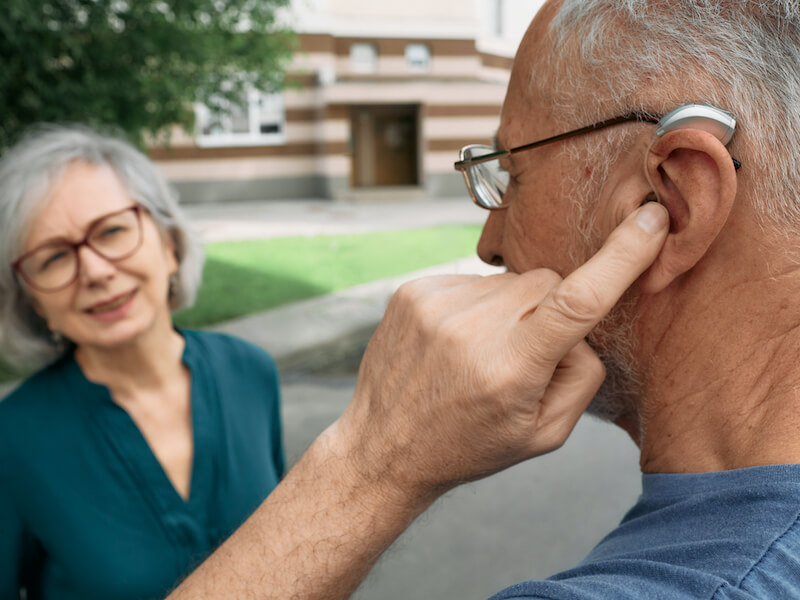
Have you ever had your internet disappear just as you’re almost to the best part of your favorite Netflix movie? Instead of finding out who won the baking show, you have to watch a never-ending spinning circle. And so you just wait. Is it your internet provider, modem, router, or perhaps it will simply come back on its own? It’s not a great feeling.
Technology can be tremendously aggravating when it doesn’t work correctly. Your hearing aids definitely fall into this category. The majority of the time, your hearing aids will provide you with the means to stay connected to loved ones, have discussions with co-workers, and keep up with your neighbors.
But when they stop working, your hearing loss symptoms can abruptly become a lot more frustrating. You’ve been let down by the technology you count on. How do hearing aids just quit working? So how do you deal with that? Here are the three common ways your hearing aids can malfunction and how to troubleshoot and identify them.
Hearing aids can often have three common issues
Hearing aids are sophisticated devices. Even still, there are some common problems that individuals with hearing aids may experience. Let’s have a look at possible causes of these issues and potential fixes.
Whistling and feedback
So, maybe you’re attempting to have a chat with your family or watch your favorite television show and you begin to notice a horrific whistling noise. Or maybe you notice some feedback. You start to think, “this is strange, what’s up with this whistling”?
Feedback and whistling can be caused by these possible problems:
- You might not have your hearing aids correctly positioned in your ears. Try to take them out and re-seat them. You can also try reducing the volume (if this works, you may find some short-term relief, but it also likely means that the fit isn’t quite right and you should talk to us about it).
- For people who use behind-the-ear hearing aids, the tubing that connects your earmold with your hearing aid might have become compromised. Have a close look to see if the tube may have detached or might be compromised somehow.
- Earwax buildup in your ear canal can compromise how your hearing aid works. This is a fairly common one. Whistling and feedback are often one result of this kind of earwax buildup. If possible, you can attempt to clean some earwax out of your ear or consult with us about the best way to do that (do not use a cotton swab).
Depending on the underlying cause of the feedback, we can help you deal with these issues if you can’t fix them on your own.
Hearing aids not producing sound
Your hearing aids are supposed to make, well, sound. That’s what they’re created to do! So if you find yourself thinking, “I don’t hear any sound coming from my hearing aid,” well, then something is definitely not right. So what could cause hearing aids to drop all sound? Well, there are a couple of things:
- Power: Look, we’ve all disregarded turning on the hearing aid before. Be sure that isn’t the problem. Then you can cross that of the list of possible issues.
- Earwax buildup: Here we go again with the earwax! Inspect your device for signs of earwax on the microphone or speakers or any sensitive parts. Keep your device really clean.
- Batteries: If you have rechargeable batteries, make certain that they are completely charged. And even rechargeable batteries should be swapped out on occasion.
- Your settings: If you have them, cycle through your custom settings. It’s feasible your hearing devices are on the wrong custom setting (so maybe your hearing aids think you’re in a gymnasium instead of at the kitchen table). The sound you’re hearing may be off as a consequence.
If these steps don’t address your issues, we might have the answers. We’ll be able to help you identify the next steps, and whether maintenance, repair, or replacement is needed.
Your ears hurt when you’re wearing your hearing aids
What if your hearing aids are working fine, but whenever you put them in your ears, your ears start to hurt? And you’re likely thinking: why do my ears ache when I use my hearing aids? This sort of discomfort isn’t exactly conducive to wearing your hearing aids over the long term. So, what could be causing it?
- Fit: The fit of the device is the most evident issue. After all, most hearing aids work best when the fit is nice and snug. Which means that there can occasionally be pain involved in a poor fit. Many hearing aids can be customized to your particular ears. The better the fit, the fewer problems you’ll have with pain over the long run. If you come see us, we can help you achieve the best fit for your device.
- Time: Getting used to your hearing aids will take a little while. Each individual will have a different adjustment period. When you first get your new hearing aids, we can help you get a realistic concept of the adjustment period you can anticipate. If uncomfortable ears remain, speak with us about that too!
Take your new hearing aid out for a test ride
One of the best ways to prevent possible problems with hearing aids is to take them for a bit of a test run before you decide. In the majority of instances we’ll let you try out a set of devices before you determine that’s the set for you.
In fact, we can help you identify the best type of hearing aid for your requirements, adjust the fit to match your ears, and help you manage any ongoing issues you may have with your devices. We will be your resource for any assistance you need.
And that’s a lot more than you will get from an over-the-counter hearing aid!